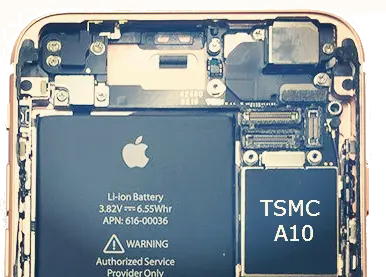As we all know, Apple chose to release a brand new 9.7-inch iPad Pro in this spring event, rather than everyone expected last fall, that’s because last year Apple prepared another flagship product 12.9-inch iPad Pro. So and so, the company will respectively launch an iPad in spring and autumn every year. Moreover Previously, Apple’s technical director ‘Johny Srouji’ in charge of the overall design of the hardware and chip also said, 12.9-inch iPad Pro was supposed to debut in Spring 2015 wieh A8X chip, but was delayed since it not expected to reach the ideal.
However, since Apple can re-set the release schedule in the case of not satisfied, so I personally think that no new 12.9-inch iPad Por appears in this fall, combined with today’s iPad sales, Apple may directly skip the release of a new larger iPad. But in spring 2017, Apple will also update two iPad Pro models as scheduled, including large and small, and obviously they will be equipped with A10X chip. More in-depth forecast, A10X will very likely be the first one 10- nanometer chip manufactured by TSMC.
Apple already running into the limits of 16-nanometer FinFET+
A portion of Apple’s A9 chips, as well as all of the A9X chips, are built on TSMC’s 16-nanometer FinFET Plus manufacturing process. This technology, coupled with a lot of very good architectural enhancements on Apple’s part, made the A9 and A9X processors the mobile processors to beat.
What I found particularly interesting, though, is that the A9X chip that Apple wasn’t able to run it at full-tilt inside of the slim 9.7-inch iPad Pro; it had to reduce the CPU speed slightly and the graphics performance significantly in the smaller iPad Pro model.
The A9X chip is also quite large, measuring in at a whopping 147 square millimeters.
Although Apple could probably do another generation of chip on 16-nanometer FinFET Plus, enhancing the architecture in a bid to get better performance in the desired power envelope, TSMC has said that it will go into production on its 10-nanometer chip manufacturing technology in late 2016/early 2017.
It makes a lot more sense, then, for Apple’s next iPad processor to be built on this 10-nanometer technology than on the 16-nanometer node.
What will 10-nanometer buy Apple?
TSMC claims that its 10-nanometer technology will deliver around twice the number of transistors in a given area and either 18% better performance at a given power level or the same performance at as much as 40% less power than 16-nanometer FinFET Plus.
Using the 10-nanometer process, Apple’s A10X could see a significant increase in the number of graphics cores implemented (graphics workloads scale nicely with additional hardware resources). Apple could also, through a combination of better transistor performance and improved architecture, deliver a pretty substantial boost in CPU performance as well.
Since the 10-nanometer process is likely to be quite immature at first, it would make sense to go into production on the relatively low-volume A10X on it first. This should help yield learning so that when it comes time to ramp production of the A11 chip for the much more important iPhone product line (which will presumably also be on the 10-nanometer process), yields will be in good shape, meaning Apple can get all the chips it needs at a reasonable cost.














+ There are no comments
Add yours